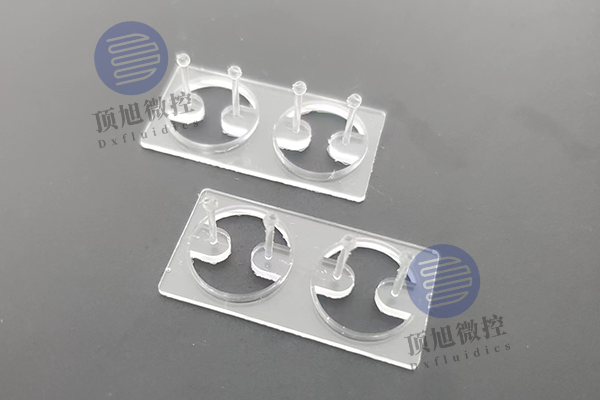Introduction
Heart diseases have been a major health problem worldwide, and drug development and screening are critical to treating these diseases. In recent years, an innovative technology called engineered heart tissue chips (a type of organ chip, which belongs to the category of microfluidic chips) has attracted a lot of attention.
The technology utilizes engineered heart tissue (EHT) to create a unique drug screening platform that provides researchers with a more realistic and controlled experimental environment by mimicking the three-dimensional structure and mechanical responsiveness of real heart tissue.
In this paper, we will delve into the key features of engineered cardiac tissue microarrays, their advantages, and their potential applications in the field of cardiac tissue development and drug discovery.

1. Background
Heart diseases are one of the leading causes of death worldwide, and critical to the effective treatment and prevention of these diseases is an in-depth understanding of the physiological and pathological processes of cardiac tissue.
Conventional cell culture and animal testing, although helpful in studying some properties of cardiac cells, still cannot fully mimic the complex cardiac tissue environment due to their limitations. Therefore, a new technique is urgently needed to improve the efficiency and accuracy of drug screening.
2. Key Features of Engineered Heart Tissue Chips
2.1 Multi-species Cardiac Cell Embedding
The uniqueness of Engineered Heart Tissue Chips lies in their utilization of cardiac cells from different species, including rodents and humans. This feature enhances the chip's biological diversity, allowing for a more authentic simulation of the human physiological environment and providing more reliable data for drug development.
2.2 Three-Dimensional Structure and Mechanical Responsiveness
By embedding cardiac cells in a fibrin gel containing polydimethylsiloxane (PDMS), the organ-on-a-chip was able to generate EHTs with three-dimensional structure and mechanical responsiveness.
This ability to mimic real heart tissue allows researchers to gain a deeper understanding of the effects of drugs on heart cells, laying the foundation for precision medicine research.
2.3 Efficient Production and Improved Cultivation Environment
The platform has an efficient production capacity to generate hundreds of EHTs per week, although its production is still constrained by the availability of cardiac cells.
In addition, assessment of assisted muscle contraction was performed in an improved culture environment, demonstrating the improvement of microfluidic chips in simulating more realistic physiological environments. This makes engineered heart tissue microarrays a powerful tool for high-throughput drug screening.
2.4 Customized Design
Designed for 24-well plates, the customization enhances the organ chip's ease of use and applicability for standard laboratory operations and high-throughput screening. This tailored design improves the practicality and versatility of the microfluidic chip, making it a preferred platform for researchers.
3. Application Prospects
As an emerging platform for drug screening, Engineered Heart Tissue Chips offer promising avenues for the development of cardiac tissue and preclinical drug research. The simulation of three-dimensional structure and mechanical responsiveness enables researchers to comprehensively assess the effects of drugs on the heart, providing more accurate data for the discovery and development of new drugs.
4. Challenges and Outlook
Despite the immense potential demonstrated by Engineered Heart Tissue Chips in drug screening, challenges persist. One such challenge is the availability of cardiac cells, directly impacting production efficiency. Additionally, further research is required to validate the accuracy and reliability of the chip in simulating a real cardiac environment.
In the future, Engineered Heart Tissue Chips are poised to make significant breakthroughs in cardiac pathophysiology, drug screening, and new drug development. With continuous technological advancements and deepening research, this platform is expected to become an engine driving innovation in the field of cardiac medicine, contributing significantly to the improvement of patients' quality of life.
Conclusion
Engineered Heart Tissue Chips, as an innovative drug screening platform, provide researchers with a more realistic and controllable experimental environment by simulating the three-dimensional structure and mechanical responsiveness of real heart tissue. Key features such as multi-species cardiac cell embedding, efficient production, and improved cultivation environments position these chips as important tools in cardiac disease research and pharmaceutical development. Despite facing some challenges, continuous improvement and expanded applications make Engineered Heart Tissue Chips increasingly vital for future breakthroughs in cardiac medicine.
DXFLUIDICS
Dxfluidics can provide the processing of Engineered Heart Tissue Chips.
| Product Code | Number of Slots | Antenna Size | Material | Price(CNY) | ||
| Length(mm) | Diameter(mm) | Space(mm) | ||||
| 100001 | 2 | 10 | 1 | 8.5 | PDMS | 600 |
| 100002 | 4 | 10 | 1 | 8.5 | PDMS | 1000 |
| Product Code | Slot Size | Material | Price(CNY) | |||
| Length(mm) | Width (mm) | Height (mm) | ||||
| 100003 | 2 | 13.5 | 12 | 3 | PTFE | 200 |
| 100004 | 4 | 13.5 | 12 | 3 | PTFE | 400 |
Ordering Methods

© 2025. All Rights Reserved. 苏ICP备2022036544号-1















